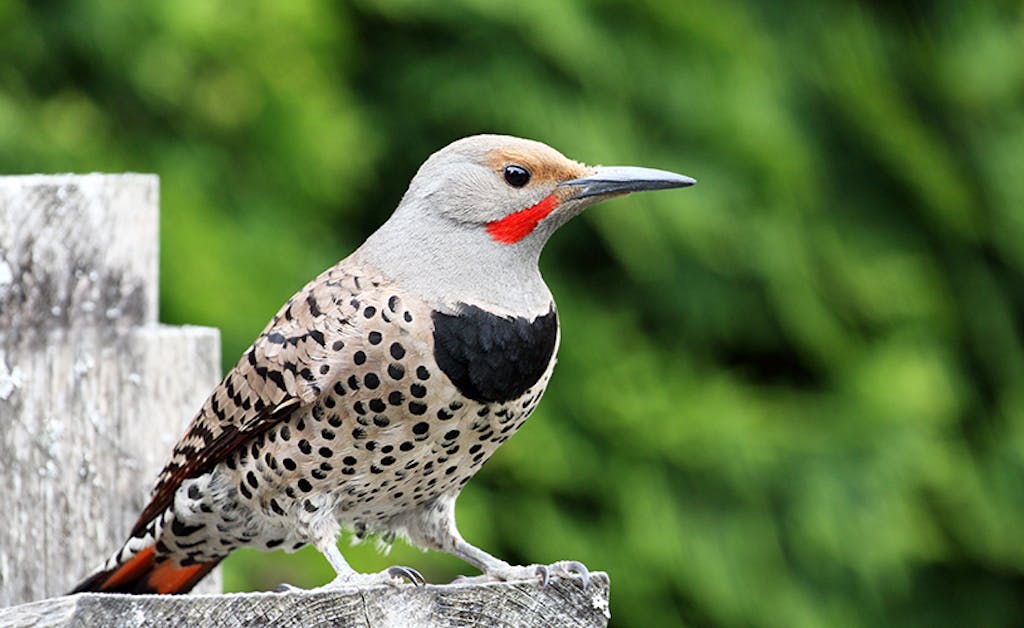4-minute read
In this article:
- Learn which birds commonly cause the most damage to utility poles.
- Discover the point at which the size of bird holes becomes problematic.
- Discover Constellation Clearsight and our proactive maintenance solutions for preventing bird-related damages.
As a leading electrical infrastructure inspection company, it’s critical that we understand the various issues that can arise for electric cooperatives across America. In some recent inspections, we have seen an increase in wood pole damage – leaving significant holes across cooperative infrastructure.
Who or what is causing all of this damage? Coming in an array of colors, shapes and sizes, and quickly taking flight before they can be caught, it’s the North American family of birds.
Related: The Mountain Pine Beetle and Other Pests to Be Aware Of
Now a quick word about the bird (rhyming intentional). We here at Clearsight have a particular fondness for our feathered friends and do what we can to protect their natural habitats. Birds are critical for the American ecosystem: from pollinators and seed dispersal to pest control to their cultural and recreational significance, birds are invaluable to us and the world we live in.
We love birds and know our electric cooperative colleagues across the country do, too!
The challenge for electric cooperatives is that birds also like to wreak havoc on wood poles. Birds are notorious for creating holes in electric wood poles, which can lead to significant damage to the poles themselves and the electrical lines they support. This damage can result in costly repairs and pose a serious threat to structural integrity, energy reliability, and the safety of workers and the public.
Get In Touch
Reach out to our inspection team to learn more about how we can help maintain your critical infrastructure…
What Bird Species Cause the Most Damage to Utility Poles?

At the top of the ‘most wanted’ list for bird holes are several species of American woodpecker.
- Northern Flicker: This medium-sized woodpecker is found throughout North America and is known for its distinctive red patch on the back of its head.
- Red-bellied Woodpecker: This medium-sized woodpecker is found across the east and southeast of the U.S.
- Pileated Woodpecker: This large woodpecker is found in forests throughout North America. Pileated Woodpeckers are known for their powerful drilling ability and can create large holes in wooden structures, including electric poles.
- Downy Woodpecker: This small woodpecker is found throughout North America and is known for its black-and-white plumage. Downy Woodpeckers are known to drill small holes.
- Hairy Woodpecker: This medium-sized woodpecker is found throughout North America and is similar in appearance to the Downy Woodpecker, but larger. They are known to drill small to medium-sized holes.
The main issue with birds creating holes in electric wood poles is the weakening of the structure.
- These holes allow moisture to enter the pole, which can cause rot and decay, leading to further structural damage. Additionally, the holes created by birds provide access points for other animals, such as squirrels and rats, which can further damage the pole and the electrical lines.
- The damage caused by bird holes in electric wood poles can be particularly severe during harsh weather conditions, such as high winds, ice storms, and heavy rain. During these events, weakened or compromised poles can be knocked down, leading to power outages and potentially dangerous situations for nearby residents.
How Much Damage to the Utility Pole is Too Much?
One common question we receive: At what size does a bird hole pose a serious problem for a wooden utility pole?
The size of a bird hole that could cause an electric wood pole to fail can differ depending on several factors, such as the pole’s age, condition, the hole’s location, and the weather’s severity.
In general, a bird hole that is more than two inches in diameter can compromise the structural integrity of an electric wood pole, especially if the hole is located in a critical area of the pole or if there are multiple holes in close proximity to each other.

However, it’s important to note that even smaller holes can lead to moisture penetration and decay, which can weaken the pole over time and make it more susceptible to failure during high winds or other extreme weather events.
Regular inspections of electric cooperatives’ poles are crucial for identifying damage caused by birds or other factors. Early detection of woodpecker holes or other damage can allow for timely repairs or replacement of the poles, ensuring the safety of workers and the public while preventing costly repairs.
To proactively prevent bird damage, electric cooperatives should consider conducting regular inspections of the poles to help identify early signs of damage caused by birds and allow for timely repairs.
Get an Inspection Today
It is important to recognize the significant impact that birds can have on electric wood poles owned by electric cooperatives in rural America. The damage created by these birds is a significant problem that can lead to costly repairs and pose a serious threat to safety.
It’s crucial for electric cooperatives to take proactive measures to prevent bird damage to their wood poles, which includes conducting regular inspections. As a leading electric inspections company, we understand the importance of identifying and addressing potential issues before they become more severe, and we are here to help electric cooperatives keep their infrastructure in top shape.
Constellation Clearsight’s team of experts and engineers use cutting-edge technology to collect data on the health of wood poles, including the effects of bird damage. This data is integrated seamlessly into electric cooperatives’ systems, allowing our co-op colleagues to prioritize and address potential issues before they become more severe. By working with Constellation Clearsight, electric cooperatives are empowered to take proactive measures to protect their infrastructure and ensure the longevity of their wood poles.
Related Content

DISTRIBUTECH International 2024 Featured Presentation is Now Available On-Demand
At DISTRIBUTECH International, our very own Teague Maxfield and Microsoft’s Bala Balakreshnan presented on data analytics for the T&D industry. Watch here!

Clearsight’s DISTRIBUTECH International and TechAdvantage 2024 Recap
Discover insights from Clearsight’s attendance at DISTRIBUTECH International and TechAdvantage 2024, highlighting key takeaways and event differentiators.

